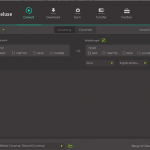The Correct Way to Utilize WordPress for Better Business Performance and Results
Do you know what the websites of The New York Times, People Magazine, Wall Street Journal’s Speakeasy, Forbes and National Geographic have in common? All the sites use WordPress, which is perhaps the most popular CMS today that powers close to 30% websites. What it means would become clear from the fact that daily 500 new WordPress websites make its appearance on the web. Millions of posts and comments appear on WordPress.com, and there are more than 44,000 WordPress plugins available.
The enormous flexibility of the platform and its wide-ranging functionalities makes it the perfect choice for companies like Digital Storm SEO – Marketing. For utilizing the powers of WordPress, you must have a good understanding of the platform so that you can adapt it to your SEO needs. As you keep reading this article, it would become clear what you must do make WordPress work for SEO.
Time the indexing right
Indexing the website at the right time is critical to ensure that only the pages of your choice get indexed. The search engine spiders are continuously scanning the web, and whenever they come across any new content, it immediately crawls it for indexing. Pages, no matter in which condition it exists are open for crawling. If half-done pages or pages, which are work in progress, appear for indexing, it would give the wrong results and affect the site’s SEO prospects. To prevent it, make use of the WordPress feature that allows selective crawling of only perfectly prepared web pages.
Prevent duplicate page indexing
The advantage of using WordPress is that it allows website owners to exercise their discretion in indexing. The feature will enable you to tell search engines what content to index and what to skip. It may sometime happen that you use the same title for blogs as well as blog categories. Since the titles are identical, it leads to a situation of duplicate title and duplicate content, which you must avoid at all cost to avoid Google penalty. To direct search engines towards a specific page that you want to appear in indexing between the two pages with the same title, you can use the ‘no index’ option for identifying the page that has minor relevance so that it does not appear in indexing.
Eradicate links of no value
It is essential to ensure that you build a healthy link profile that contains good quality links only or otherwise the search engine spiders would pick up all links that it encounters including poor quality links. The inferior links would damage the SEO prospects, but you can avoid it by using a unique feature of WordPress. The feature allows controlling the crawling by preventing the spiders from picking up poor links. Identify the links that you want to keep out from the reach of the spiders and mark it as ‘no follow’ link so that the undesired links do not figure in Page Rank.
Make the website faster
Website speed is critical in providing the best viewing experience for which you must ensure that all pages open up within 2 seconds which is the maximum time users are ready to permit. Not only should pages load fast but also the same speed should reflect during switching between content and pages. The faster is the website is, the higher will be the ranking prospects too. One way of speeding up websites is to reduce the server load by using caching plugins, which can cache both static and dynamic content thereby ensuring a better experience in viewing.
Optimize images to speed up the website
Use pictures with careful consideration so that you do not overload the site and make it slow. Besides restricting the number of images, also pay attention to the size of images because large photos make pages take a longer time to load. Optimizing images is a way of compressing the image to reduce its size without affecting the resolution so that it occupies less space and speeds up the page opening time. Either you can upload optimized pictures, or you can optimize images that are already on the site by using suitable WordPress plugins, which can automatically resize images. Correctly tagging the images enhances SEO.
Remove spam comments
For doing well in SEO, you have to be tough on spam comments and use the technique of blocking it by using the ‘no follow’ feature of WordPress. You can now block links that users post if you find it to be harmful to SEO. Spam comments affect user experience negatively because usually, it does not have any relevance to the blog topic where it appears. Spam comment can harm SEO because it would be a black spot on the blog as search engines might categorize it as spammy content.
Review the performance of the website after implementing some or all the measures and identify the areas that need further improvement.
Author bio:
Melinda Barnes is an SEO specialist who also heads the digital marketing wing of Digital Storm SEO – Marketing Company. She began her career as a software engineer and then moved to marketing. She is an amateur photographer too.















